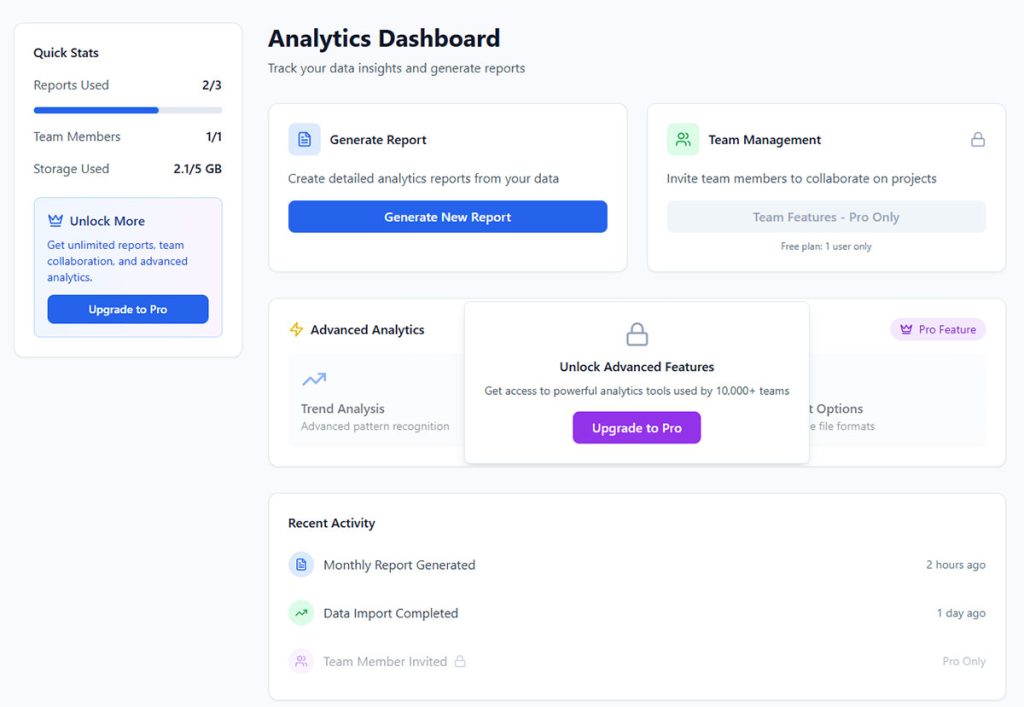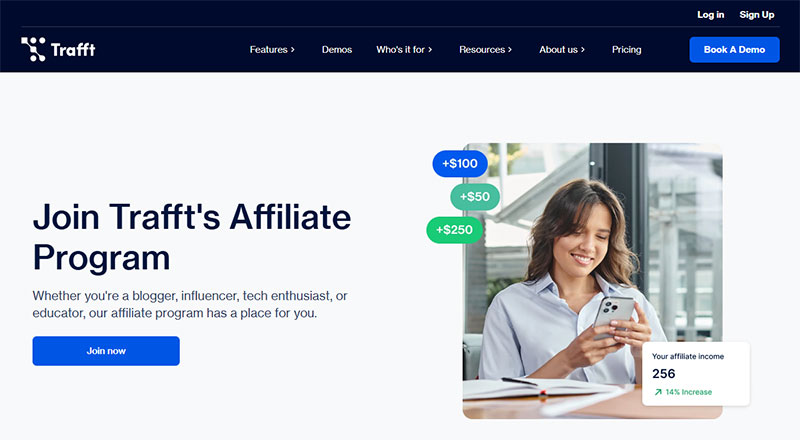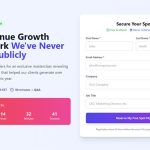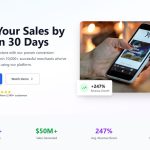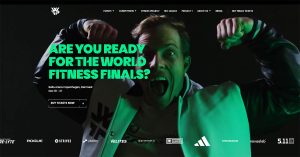Empty rooms generate zero revenue. That’s the brutal math every hotelier faces daily. Lead generation for hotels solves this problem by building a consistent pipeline of potential guests before they…
Table of Contents
Software companies face intense competition for qualified prospects in today’s crowded marketplace. Lead generation for SaaS requires strategic approaches that go beyond traditional marketing tactics to capture and convert high-value customers.
Modern SaaS businesses need systematic processes for attracting marketing qualified leads while minimizing customer acquisition costs. The subscription model demands consistent prospect flow to maintain revenue growth and market position.
This comprehensive guide reveals proven strategies that successful software companies use to generate qualified prospects consistently. You’ll discover actionable techniques across:
- Content marketing and educational resources that convert browsers into trial users
- Paid advertising optimization for Google Ads, LinkedIn campaigns, and social media channels
- Email marketing automation sequences that nurture prospects through complex buyer journeys
- Website optimization tactics that transform visitors into engaged prospects
- Analytics frameworks for measuring lead quality and attribution across all channels
Whether you’re launching a B2B marketing automation platform or scaling a freemium productivity tool, these proven methods will accelerate your software sales pipeline and improve conversion rates.
Content Marketing for SaaS Lead Generation
SaaS companies that prioritize content marketing report lead generation growth of up to 400%. Strategic content addresses specific pain points while showcasing software capabilities.
Educational Content That Converts
Problem-solving blog posts establish thought leadership while attracting potential customers.
- 98% of SaaS companies have blogs on their websites
- Successful blogs average 3,000 words and focus on comprehensive guides
- Blogs contribute to 434% more indexed pages and 97% more indexed links
Industry research and data reports position your company as an authority. B2B SaaS brings in a 702% ROI from SEO, with thought leadership content being the most valuable.
Case studies with real customer results provide social proof.
- 70% of SaaS businesses consider case studies their most effective content format for converting leads
- 59% of decision-makers use case studies to evaluate shortlisted vendors
- Document specific metrics: customer acquisition cost reductions, revenue improvements, pipeline enhancements
Webinars and educational video series engage prospects directly.
- 93.5% of SaaS organizations provide educational webinars
- 45% of B2B marketers consider webinars the most effective top-of-funnel tactic
- Host live sessions covering growth techniques, automation best practices, buyer persona development
Gated Content and Lead Magnets
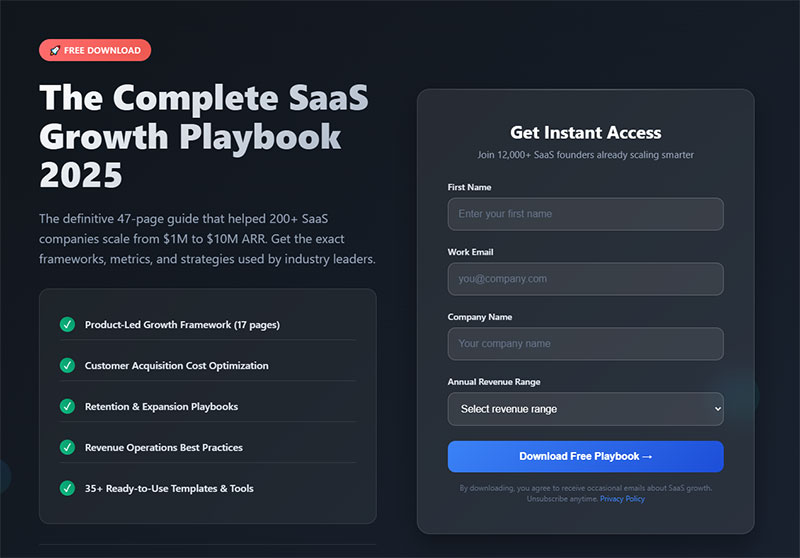
Free e-books have a 45% conversion rate for SaaS companies. Create whitepapers addressing enterprise software evaluation criteria and competitive analysis frameworks.
Templates and tools that decision-makers prioritize:
- ROI calculators (60% prioritize)
- Assessments (61% prioritize)
- User reviews (63% prioritize)
- Demos (77% prioritize)
51% of buyers expect high personalization when researching B2B solutions. Email courses nurture prospects over time with digestible segments on marketing automation, sales enablement, and performance metrics.
SEO and Organic Traffic Generation
Over 53% of website traffic comes from organic search. Target buyer-focused keywords at different funnel stages.
Critical SEO facts:
- 68% of website traffic starts from a search query
- The first Google result gets 27.6% of all clicks
- Position #1 results average 1,890 words
- 75% of customers search before making purchases
Content clusters should cover:
- Lead generation automation
- Software sales optimization
- Customer retention strategies
- Revenue attribution modeling
Segmentation impact: SaaS websites targeting by industry see 28.7% organic traffic growth vs. 4.1% for non-segmented sites.
Key Performance Metrics
ROI and traffic benchmarks:
- SEO drives 1000%+ more traffic than organic social media
- 60% of marketers cite inbound as their top lead source
- 9+ blog posts monthly increase traffic 35.8% year-over-year
- SEO ROI can reach 12.2x marketing spend
Companies publishing frequent, targeted content see dramatically better results than those with minimal content strategies.
Paid Advertising Strategies for SaaS
Paid advertising accelerates lead acquisition when organic efforts need supplementation. 81% of successful B2B content marketers use paid methods to promote their content, making strategic campaign management crucial for maximizing return while minimizing the average SaaS CAC of $702.
Search Engine Marketing (SEM)
Structure campaigns by product lines and customer segments. Create separate ad groups for different software features to improve targeting precision.
Focus on high-converting SaaS terms like “marketing automation software” and “sales pipeline management.” Monitor competitor approaches and adjust bidding strategies accordingly. Current benchmarks show:
- Average B2B CTR: 2.41% for search ads
- Average conversion rate: 3.75% for search campaigns
- Cost per SQL decreased 31% in Q1 2024 with proper optimization
Write ad copy that addresses specific business challenges. Highlight automation capabilities, integrations, and scalability benefits. Include compelling CTAs emphasizing free trials or product demos.
Optimize landing pages for single conversion goals. Remove navigation distractions and align messaging with ad copy. Landing pages with video achieve 86% conversion rates compared to text-only pages.
Social Media Advertising
LinkedIn dominates B2B SaaS advertising. 75% of B2B marketers use LinkedIn as their primary paid social channel, with 79% reporting it produces the best results.
Target decision-makers using:
- Job title and company size filters
- Industry-specific targeting
- Thought Leader Ads (2.3x higher CTR than standard image ads)
LinkedIn delivers superior ROI with 113% return compared to other platforms. Key performance benchmarks:
- CTR ranges: 0.44%-0.65%
- CPC ranges: $5-$10
- 58% of marketers report best return on ad spend
Use Facebook and Instagram for B2C SaaS targeting consumers with productivity apps, design tools, and personal finance solutions.
Leverage YouTube for product demonstrations. 98% of leading SaaS companies drive the most social traffic through YouTube. Create interface walkthroughs and customer success stories.
Retargeting and Remarketing Campaigns
Segment website visitors by behavior. Show different ads to homepage visitors versus pricing page browsers based on their demonstrated interest level.
Retargeting amplifies brand recognition. Consumers exposed to display ads are 155% more likely to search for your brand terms, creating cross-channel lift.
Create lookalike audiences from existing customers. Upload customer data to identify similar prospects with higher conversion potential.
Target video viewers with follow-up messaging. People who watched demos or educational content represent high-intent prospects ready for conversion offers.
Conversion Rate Optimization
Focus on systematic optimization across the funnel. SaaS visitor-to-lead conversion rates range 2-7%, but top performers achieve higher rates through continuous testing.
Optimization creates compound effects. Improving acquisition by 20% and sales conversion by 10% yields 32% total lift due to multiplicative impact.
Key optimization targets:
- Trial activation rate: 37.5% industry benchmark
- Free-to-paid conversion: 78% managed by sales teams
- Average customer journey: 211 days from contact to close
Reduce form fields during signup to minimize friction. Implement interactive walkthroughs to guide users through key features early.
Budget Allocation Strategy
Allocate 15-50% of revenue to marketing depending on growth stage. Early-stage SaaS companies spend up to 50% while established companies maintain 15% allocation.
Target LTV:CAC ratio of 3:1 to 5:1 for sustainable growth. Average revenue ROI increased from 1.13 in 2022 to 1.38 in Q1 2024 among optimized campaigns.
Diversify across proven channels:
- Email marketing: 84% of SaaS marketers
- Social media advertising: 75% adoption
- Content marketing: 69% usage
Success requires coordinated content marketing and paid advertising efforts. Content builds long-term organic growth while paid channels provide immediate results and audience expansion opportunities. Monitor performance metrics across all channels to optimize budget allocation and maximize qualified lead generation.
Email Marketing and Lead Nurturing
Email marketing delivers $36-$42 for every $1 spent – a 4,200% ROI. In 2024, email click-to-conversion rates grew 27.6%.
Automated emails drove 37% of all email sales despite being just 2% of email volume.
Building and Growing Email Lists
Place opt-in forms strategically on high-traffic pages: pricing, features, blog posts. Test different designs and value propositions.
Lead magnets that work:
- SaaS implementation guides
- ROI calculation templates
- Industry benchmark reports
- Free trial access codes
Abandoned cart emails achieve 50.50% open rates and generate $3.45 revenue per recipient.
Exit-intent popups capture departing visitors. Offer extended trials or exclusive demos.
Email Sequences That Convert
Welcome emails get 83.63% open rates – the highest of any email type. Send immediate confirmation plus educational content showcasing key features.
Educational drip campaigns should cover:
- Implementation best practices
- Integration possibilities
- Security features
- Scalability options
SaaS email open rates average 21%. Break complex features into digestible explanations with real-world examples.
Trial expiration emails create urgency. Target based on usage patterns and feature adoption. Email marketing converts 2-5% on average.
Personalization and Segmentation
Segment users by:
- Enterprise vs small business
- Technical vs business decision makers
- Free trial vs freemium users
- High vs low engagement
25% of revenue comes from segmented lists. Targeted emails generate 30% more revenue than broadcasts.
Only 31% of businesses use basic segmentation – huge opportunity for competitive advantage.
Segmented campaigns boost revenue by 760%. Behavioral triggers generate 10x more revenue than standard emails.
Key personalization stats:
- 60% of consumers stop buying from non-personalizing companies
- Personalized subject lines increase opens by 26%
- 86% of consumers share emails for personalized experiences
A/B testing delivers 48:1 ROI vs non-testing companies. 93% of US companies test emails, but 39% of brands still don’t test – providing clear competitive edge.
Email ranks as most effective channel for 41% of marketers – far ahead of social media and paid search at 16% each.
Social Media Lead Generation
Social platforms connect SaaS companies directly with target audiences. 66% of marketers generate quality leads spending just 6 hours weekly on social media. Here’s how to maximize your results on each platform.
LinkedIn: Your B2B Lead Machine
Why it works: LinkedIn generates 80% of all B2B social media leads and costs 28% lower per lead than Google AdWords.
What to do:
- Share thought leadership content – Posts get 3x more shares when positioned as expertise
- Use LinkedIn Sales Navigator to identify decision makers and track engagement signals
- Engage with prospect posts before pitching – comment meaningfully on their updates
- Join industry groups and answer questions to build authority
- Use Lead Gen Forms in ads – they reduce friction and boost conversion rates significantly
Video Content Strategy
Why it matters: 89% of businesses use video marketing, and video gets 5x more engagement than text posts on LinkedIn.
How to execute:
- Create short-form videos (under 60 seconds) – they deliver the highest ROI of any content format
- Go live regularly – live video generates 24x more engagement than regular posts
- Make educational content – 78% of people prefer learning about products through short videos
- Post native videos directly to platforms instead of linking to external players
- Add captions – most social videos are watched without sound
User-Generated Content Campaigns
The opportunity: User-generated videos get 10x more views than brand-produced content, and 60% of consumers say UGC is the most genuine form of advertising.
Your action plan:
- Run customer challenges – ask users to share success stories with your product
- Create branded hashtags for customers to use when posting about your software
- Feature customer spotlights regularly on your channels
- Repost customer content with permission and proper attribution
- Incentivize sharing with contests or recognition programs
Platform-Specific Tactics
Twitter: Real-Time Engagement
- Join industry conversations using relevant hashtags
- Share quick tips and bite-sized insights about your industry
- Respond within 1 hour to mentions and questions for maximum impact
- Thread longer insights to provide more value while staying engaging
Instagram: Visual Storytelling 29% of consumers plan purchases based on Instagram content they see.
- Post behind-the-scenes content of your team and product development
- Create product demo videos showing your software in action
- Use Instagram Stories for time-sensitive updates and polls
- Partner with micro-influencers in your industry niche
Facebook Groups: Community Building
- Create private groups for customers to share best practices
- Host weekly Q&A sessions addressing common software challenges
- Share exclusive content like beta features or industry reports
- Facilitate peer connections between group members
Social Selling That Works
The stats: 68% of marketers generate leads through social media, but relationship building beats direct pitching.
Your approach:
- Lead with value – share helpful resources before any sales pitch
- Personalize outreach messages – reference specific posts or mutual connections
- Follow the 80/20 rule – 80% helpful content, 20% promotional content
- Use social listening tools to find prospects discussing relevant challenges
- Track engagement patterns to identify warm prospects ready for direct outreach
Community Building Strategy
Why invest: Communities generate referrals and long-term customer relationships.
Implementation steps:
- Host monthly virtual events – 46% of companies do webinars at least monthly
- Create Slack workspaces or Discord servers for ongoing discussions
- Record all sessions for ongoing content and lead nurturing
- Facilitate peer introductions between community members
- Share exclusive insights available only to community members
Measuring Success
Track these metrics:
- Lead attribution using UTM parameters for each social platform
- Engagement rates – comments and shares matter more than likes
- Conversion rates from social traffic to your landing pages
- Customer acquisition cost by social channel
- Time to conversion from first social interaction to sale
Bottom Line: Social media generates double the leads of traditional methods like telemarketing. 21% of businesses say it has the biggest impact on their lead generation. Focus on providing value first, building genuine relationships, and using platform-specific tactics that align with user behavior.
Website Optimization for Lead Generation
Website optimization transforms visitors into qualified prospects through strategic design and user experience improvements. The average website conversion rate is 2.35%, but the top 10% of websites achieve 11.45% or higher. Every element should guide users toward conversion actions.
Landing Page Design That Converts
Why single-purpose pages work: Landing pages have a 160% higher conversion rate compared to other signup forms and achieve an average 9.7% conversion rate across industries.
How to create high-converting pages:
- Remove navigation bars – this simple change can double your conversion rate (one test increased signups from 3% to 6%)
- Eliminate sidebar links and distractions that pull attention from your primary call-to-action
- Focus on one conversion goal per page – businesses with 10-15 landing pages generate 55% more leads than those with fewer than 10
- Use clear value propositions – pages with clear value propositions have 34% higher conversion rates
- Add social proof strategically – displaying customer logos, testimonials, and user count statistics
Form Optimization Strategy
The impact: Reducing form fields from 11 to 4 can increase conversions by 120%. Forms with 3 fields achieve a 10% conversion rate.
Best practices to implement:
- Start with essential fields only – ask for name, email, and company size initially
- Use progressive profiling to collect additional details during trial onboarding
- Ask non-threatening questions first – use the Breadcrumb Technique to get small “yes” responses before the big ask
- Test different field combinations – email + name converts at 7%, while email + birthdate converts at 5.7%
- Provide helpful error messages to reduce abandonment
Mobile-First Optimization
Why mobile matters: 63% of organic search visits come from mobile devices, but mobile pages load 70.9% slower than desktop. Mobile-optimized landing pages improve conversion rates by 27%.
Mobile optimization tactics:
- Optimize for 3-second load times – pages loading in under 3 seconds have 32% higher conversion rates
- Test forms on smartphones and tablets regularly – many B2B decision makers research during commutes
- Use responsive design principles to ensure optimal experience across all devices
- Compress images and minimize JavaScript to reduce load times
- Implement lazy loading for below-the-fold content
Call-to-Action Mastery
The opportunity: Personalized CTAs convert 202% better than generic ones, and using CTA buttons instead of text links increases click-through rates by 28%.
CTA optimization steps:
- Position primary buttons above the fold and repeat throughout longer pages
- Use action-oriented language that creates urgency:
- “Start Your Free Trial”
- “Get Instant Access”
- “Download the Guide”
- “Schedule a Demo”
- Test contrasting colors that stand out against your background design
- A/B test button text, colors, sizes, and placement systematically
- Make CTAs mobile-friendly with adequate touch target sizes
Page Speed Optimization
Critical impact: A 1-second delay in page load time can reduce conversions by 7%. 47% of customers expect pages to load in 2 seconds or less.
Speed improvement methods:
- Compress images using WebP or AVIF formats without sacrificing quality
- Minimize JavaScript and CSS files by combining and compressing code
- Use content delivery networks (CDNs) to serve content from servers closer to users
- Enable browser caching to store frequently accessed resources
- Remove unnecessary third-party scripts – each additional script slows pages by 34.1 milliseconds
- Monitor Core Web Vitals (LCP, INP, CLS) using Google PageSpeed Insights
Trust Signal Implementation
Building credibility: 36% of top-performing landing pages feature testimonials, and social proof can increase conversions by 12.5%.
Trust elements to include:
- Customer logos and testimonials prominently displayed
- Security certifications and compliance badges near forms
- User count statistics and growth metrics to show popularity
- Industry awards and recognition to establish authority
- Money-back guarantees to reduce purchase anxiety
User Experience Flow
Navigation strategy: 84% of landing pages include navigation bars, but removing them can increase conversions by 100% for dedicated conversion pages.
UX improvements:
- Create clear paths from homepage to product pages to trial signup
- Use breadcrumbs and logical menu structures that support the buyer journey
- Implement site search to help users find specific information quickly
- Add exit-intent popups – they can increase conversion rates by 2-5%
- Use progressive disclosure to present information in digestible chunks
Video Content Integration
Performance boost: Adding videos to landing pages can increase conversions by 86%, as 90% of consumers prefer video content over text.
Video implementation tactics:
- Create product demo videos showing your software in action
- Add customer testimonial videos for authentic social proof
- Use explainer videos to communicate complex value propositions quickly
- Embed from platforms like YouTube or Vimeo instead of hosting directly to maintain page speed
- Include captions for accessibility and silent viewing
A/B Testing Framework
Testing reality: Only 17% of marketers use A/B testing to optimize landing pages, but systematic testing can lead to 30% improvement in conversion rates.
Testing methodology:
- Test one element at a time for clear results attribution
- Ensure sufficient sample size – most tests need statistical significance before conclusions
- Run tests for complete business cycles to account for day-of-week variations
- Test headlines, images, CTAs, and form lengths systematically
- Document results and build a testing knowledge base
Analytics and Measurement
Key metrics to track:
- Conversion rate by traffic source to identify best-performing channels
- Time on page and bounce rate to measure engagement
- Form abandonment rates to identify friction points
- Mobile vs desktop performance to prioritize optimization efforts
- Heat maps and user recordings to understand visitor behavior patterns
Bottom Line: Website optimization requires systematic testing and continuous improvement. Focus on mobile experience, page speed, and clear value propositions. The difference between a 2.35% average conversion rate and an 11%+ top-performer rate represents massive revenue potential for your business.
Free Trial and Freemium Lead Generation
Trial and freemium models lower barriers to software adoption while generating qualified prospects. The challenge: 95-98% of free users never convert to paying customers, making strategic implementation crucial for converting the remaining 2-5% effectively.
Trial Signup Optimization
Match trial length to software complexity. Simple tools work with 7-14 day trials, while enterprise solutions need 30+ days for proper evaluation. Trials lasting 5-9 days and 17-32 days achieve median conversion rates of 45%.
Choose your trial model strategically based on conversion goals:
- Opt-in trials (no credit card): 7.8% visitor signup rate, 17.8% trial-to-paid conversion
- Opt-out trials (credit card required): 2.4% visitor signup rate, 49.9% trial-to-paid conversion
Simplify signup forms by requesting minimal information initially. Collect additional data through in-app prompts after users experience core value. Each form field removed can increase conversions by 10-15%.
Guide users to activation quickly. Design onboarding sequences that help trial users reach key features within their first session. Progressive disclosure reveals functionality gradually without overwhelming new users.
Monitor usage patterns to identify engaged users approaching expiration. Offer extensions to active evaluators while letting inactive users convert or churn naturally.
In-Product Lead Generation
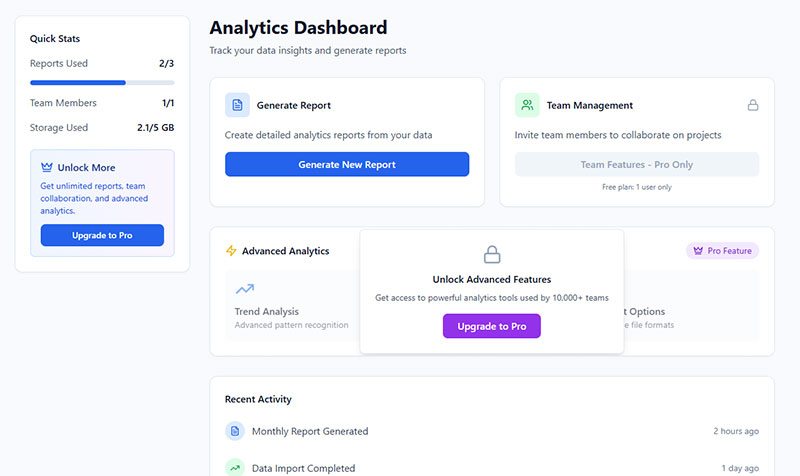
Create strategic feature gates in freemium products. Limit advanced functionality, user seats, or storage capacity to encourage upgrades. Freemium models see visitor signup rates of 13.3% but only 2-5% convert to paid plans.
Trigger upgrade prompts based on usage patterns, not arbitrary timelines. Send in-app notifications before users hit restrictions. Usage-based triggers can increase conversion rates by 25-40%.
Use progressive value demonstration. Show glimpses of premium features through:
- Limited-time access to advanced tools
- Preview modes for restricted functionality
- Success stories from paid users
Time in-app messaging around feature discovery or usage spikes. Contextual messaging that appears at optimal moments performs 2.3x better than generic upgrade prompts.
Trial-to-Paid Conversion Tactics
Send targeted onboarding email sequences based on user behavior and company size. Welcome messages, feature tutorials, and best practice guides should be segmented for maximum relevance.
Celebrate success milestones to reinforce positive experiences. Acknowledge when users complete important actions or achieve business outcomes. Share relevant case studies showing similar customer success.
Implement personal outreach for high-value prospects. Sales teams should contact enterprise trial users early, offering personalized demos or implementation assistance. Sales-assisted freemium products achieve 10-15% conversion rates compared to 3-5% for self-serve.
Create urgency with limited-time offers. Provide discounts, extended features, or additional user seats for immediate upgrades. Time-sensitive offers can boost conversion rates by 15-30%.
Optimization Based on Model Type
Self-serve freemium products should target:
- Good conversion rate: 3-5%
- Great conversion rate: 6-8%
Sales-assisted freemium products can achieve:
- Good conversion rate: 5-7%
- Great conversion rate: 10-15%
Free trial products typically see higher conversion rates:
- Good conversion rate: 8-12%
- Great conversion rate: 15-25%
Success Metrics to Track
Monitor activation rates as your primary leading indicator. Industry average activation rate is 37.5%, but top performers reach 60%+ through optimized onboarding.
Track feature adoption patterns. Users who engage with core features during trials are 3-5x more likely to convert than those who only browse.
Measure time-to-value delivery. Users who experience concrete business benefits convert at significantly higher rates than those who merely explore features.
Focus on engaged user segments. Very small businesses have higher trial conversion rates than mid-sized companies due to simpler decision-making processes.
Success requires careful balance between user value and conversion pressure. Average customer journey takes 211 days from initial contact to closed deal, so nurture long-term relationships while optimizing immediate conversion opportunities.
The key is demonstrating clear business value during free periods rather than just showcasing features. Companies like Slack achieve 30% freemium conversion rates by focusing on user success and strategic upgrade prompts rather than aggressive sales tactics.
Partnership and Referral Programs
Strategic partnerships accelerate customer acquisition while reducing marketing costs. 86% of B2B businesses with referral programs experienced revenue growth in the past 2 years, compared to 75% of businesses without programs. Collaborative relationships expand market reach beyond organic capabilities.
Strategic Partnership Development
Why partnerships work: 60% of referrals come from partnerships, and strategic collaborations help businesses reach new audiences more effectively than solo efforts.
Partnership identification strategy:
- Target complementary SaaS tools that integrate naturally without direct competition
- Focus on platforms your customers already use – this creates natural discovery opportunities
- Research integration marketplaces like Zapier (facilitating thousands of connections), Slack App Directory, or HubSpot Marketplace
- Analyze competitor partnerships to identify gaps and opportunities in your market
- Prioritize companies with similar customer profiles but different solution focuses
Integration partnership execution:
- Build native integrations with popular platforms your customers use daily
- Create bidirectional value where both partners’ customers benefit from the connection
- Document integration use cases and success stories for joint marketing efforts
- Provide technical documentation and support for seamless implementation
- Track usage metrics to demonstrate partnership value to both organizations
Reseller and Affiliate Programs
The opportunity: Almost all software companies get 20-50% of new customers through existing customer networks and partnerships.
Program structure development:
- Create tiered commission structures that reward high-performing partners (typically 10-30% for SaaS)
- Provide comprehensive training materials including product demos, sales scripts, and objection handling guides
- Develop partner-specific sales collateral with co-branded materials and case studies
- Implement attribution tracking systems to measure program effectiveness accurately
- Set clear performance expectations and regular review cycles
Joint content creation tactics:
- Co-host educational webinars addressing shared customer challenges – these often achieve higher attendance than solo efforts
- Create collaborative content like industry reports, comparison guides, or solution frameworks
- Cross-promote on each other’s channels to multiply audience exposure
- Develop shared case studies showing integrated solutions in action
- Participate in each other’s events as speakers or sponsors
Customer Referral Programs
The impact: Referred customers have a 16% higher lifetime value and are 18% more loyal than customers acquired through other channels. 91% of customers say they’d give referrals, but only 11% of salespeople ask.
Program structure optimization:
- Offer meaningful rewards for both parties – referred customers spend 25% more on initial purchases
- Choose appropriate incentive types:
- Account credits for existing customers
- Extended features or service upgrades
- Cash incentives (particularly effective for B2B)
- Tiered rewards that increase with more referrals
Friction reduction tactics:
- Provide simple sharing links and pre-written email templates
- Implement automated tracking systems that handle attribution without manual intervention
- Send real-time progress updates to referrers about their referral status
- Create easy reward redemption processes with clear instructions and timelines
- Use dedicated referral landing pages that explain the program benefits clearly
Recognition and Engagement
Long-term success factors: 82% of B2B sales leaders believe referrals generate the best leads, and programs managed by marketing teams are 3x more likely to achieve revenue goals.
Recognition strategies:
- Publicly celebrate top referrers in newsletters, social media, and company communications
- Create exclusive customer advisory boards for high-value referrers
- Provide early access to new features as a premium reward
- Feature customer success stories that highlight both the referrer and referred customer
- Host special events or experiences exclusively for program participants
Influencer and Thought Leader Partnerships
B2B influence power: 94% of B2B marketers say influencer marketing is successful, and programs generate 520% ROI on average. 85% of B2B marketers emphasize influencer marketing’s importance in their tactics.
Industry expert collaboration:
- Partner with recognized voices who already influence your target market – authentic relationships generate better results
- Focus on micro-influencers in your niche – 47% of marketers experienced most success with micro-influencers
- Engage industry analysts and consultants who advise on software selection decisions
- Collaborate with customer champions who can speak authentically about your solution
Content and Speaking Opportunities
Content strategy impact: 67% of B2B brands use influencer marketing primarily for brand awareness, while 54% focus on building credibility and trust.
Guest content tactics:
- Contribute to industry publications with educational rather than promotional content
- Exchange guest posts with complementary companies to reach new audiences
- Participate in industry newsletters and specialized publications your prospects read
- Create collaborative thought leadership pieces addressing industry challenges
- Share expertise in partner content like roundtable discussions or expert panels
Speaking and event strategy:
- Apply for relevant industry conferences and user events where your prospects gather
- Participate in virtual and hybrid events which often have lower barriers to entry
- Prepare valuable insights about industry trends, best practices, and market analysis
- Follow up with attendees through LinkedIn connections and email outreach within 48 hours
- Share presentation content across social channels to extend reach beyond the event
Measurement and Optimization
Program tracking essentials:
- Monitor referral conversion rates – referred leads convert 5x more likely than other lead sources
- Track lifetime value differences between referred and non-referred customers
- Measure partnership attribution using UTM parameters and dedicated tracking links
- Analyze program participation rates and identify optimization opportunities
- Calculate customer acquisition cost savings from referral and partnership channels
Leveraging Technology
Automation opportunities: 68.3% of brands now spend less than $50,000 on influencer marketing by focusing on efficient, smaller-scale partnerships.
Technology implementation:
- Use referral marketing software to automate tracking and reward distribution
- Implement CRM integration to capture referral data alongside other customer information
- Set up social sharing tools that make it easy for customers to spread the word
- Create dashboard reporting for partners to track their performance and earnings
- Use marketing automation to nurture referred prospects through the sales funnel
Bottom Line: Partnership and referral programs require systematic implementation but deliver exceptional results. Word-of-mouth drives $6 trillion in annual consumer spending, and 84% of B2B decision-makers start their buying process with a referral. Focus on making participation easy, rewards meaningful, and tracking comprehensive to maximize program success.
Lead Generation Tools and Technology
Technology infrastructure enables scalable prospect acquisition and nurturing. Strategic tool selection maximizes efficiency while minimizing operational complexity.
Customer Relationship Management Systems
HubSpot CRM suits small to medium SaaS companies with integrated marketing automation needs. Free tier provides essential contact management, while paid plans add advanced lead scoring and email sequences.
Salesforce dominates enterprise SaaS environments requiring complex customization and extensive integrations. Advanced reporting capabilities support sophisticated attribution modeling and revenue forecasting.
Pipedrive focuses on sales pipeline management with intuitive interface design. Visual pipeline stages and activity tracking help sales teams manage prospect progression effectively.
Custom CRM integration considerations include data migration complexity, training requirements, and ongoing maintenance costs. Evaluate integration capabilities with existing marketing automation platforms and analytics tools.
Marketing Automation Platforms
Email marketing automation streamlines prospect nurturing across complex buyer journeys. Mailchimp serves smaller companies, while Marketo handles enterprise-level complexity and personalization requirements.
Lead scoring and nurturing systems automatically qualify prospects based on behavioral and demographic criteria. Configure scoring models that reflect your ideal customer profile and buying signals.
Multi-channel campaign management coordinates messaging across email, social media, and advertising platforms. Consistent messaging improves brand recognition and conversion rates.
Analytics and reporting capabilities measure campaign effectiveness across all channels. Track metrics like lead quality, conversion rates, and customer acquisition costs to optimize budget allocation.
Lead Intelligence and Prospecting Tools
LinkedIn Sales Navigator provides advanced search filters and lead tracking capabilities. Monitor prospect activity, receive lead recommendations, and track engagement with your content and company updates.
ZoomInfo delivers comprehensive B2B contact data including email addresses, phone numbers, and organizational charts. Data accuracy and coverage varies by industry and company size.
Clearbit enriches existing contact records with additional company and demographic information. API integration enables real-time data enhancement for incoming leads and existing customers.
Lead generation Chrome extensions capture contact information while browsing prospect websites. Tools like Hunter and Lusha work directly within browser workflows for efficient prospecting.
Technology selection should align with team size, technical capabilities, and growth stage. Start with essential tools and add complexity as requirements evolve. Integration capabilities matter more than individual feature sets for long-term scalability.
Monitor tool effectiveness through conversion metrics rather than vanity statistics. Focus on lead quality, sales velocity, and customer acquisition costs when evaluating platform performance.
Analytics and Performance Measurement
Data-driven optimization separates successful SaaS companies from those burning marketing budgets. Proper tracking reveals which channels generate qualified prospects and drive revenue growth.
Setting Up Tracking and Attribution
Google Analytics goal configuration captures conversion events across your entire sales funnel. Set up goals for trial signups, demo requests, and subscription purchases. Configure ecommerce tracking to measure customer lifetime value and revenue attribution.
UTM parameter strategies enable accurate channel attribution. Tag all marketing campaigns with consistent naming conventions. Track:
- Campaign source (Google, LinkedIn, email)
- Medium (CPC, social, organic)
- Campaign name (Q4_trial_promo)
- Content variation (button_red vs button_blue)
Multi-touch attribution models reveal the complete customer journey beyond last-click attribution. Marketing qualified leads often interact with multiple touchpoints before converting. HubSpot and Salesforce provide sophisticated attribution reporting for complex B2B sales cycles.
Customer journey mapping visualizes prospect progression through awareness, consideration, and decision stages. Identify content gaps and optimization opportunities at each funnel stage.
Key Performance Indicators
Lead quality metrics matter more than volume alone. Track lead scoring distributions, sales acceptance rates, and conversion velocity. High-quality prospects move faster through sales pipelines and convert at higher rates.
Conversion rate tracking across channels reveals performance differences between traffic sources. Organic search often delivers higher-intent prospects than social media traffic. Segment analysis helps optimize budget allocation.
Customer acquisition cost calculation includes all marketing and sales expenses divided by new customers acquired. CAC payback period indicates how quickly new customers generate positive ROI.
Return on investment measurement connects marketing activities to revenue outcomes. Track metrics like:
- Cost per marketing qualified lead
- Lead-to-customer conversion rates by source
- Average deal size by acquisition channel
- Customer lifetime value trends
Reporting and Optimization
Dashboard creation consolidates key metrics for regular monitoring. Display real-time performance data alongside historical trends. Segment reporting by customer type, geographic region, and acquisition channel.
A/B testing methodologies improve conversion rates systematically. Test single variables at a time for statistical significance. Focus testing efforts on high-impact elements like headlines, call-to-action buttons, and form design.
Performance analysis identifies optimization opportunities across all marketing channels. Weekly reviews catch declining performance early. Monthly deep-dives reveal seasonal patterns and long-term trends.
Continuous improvement processes institutionalize optimization culture. Document testing results, share learnings across teams, and maintain testing roadmaps for ongoing experimentation.
Industry-Specific Lead Generation Approaches
Different SaaS segments require tailored acquisition strategies. Only 1 in 10 B2B SaaS marketers describe their lead quality as “excellent”, making industry-specific approaches crucial for breaking through the noise and reaching qualified prospects effectively.
B2B SaaS Lead Generation
Use account-based marketing to target high-value prospects with personalized campaigns. Research target accounts thoroughly before outreach. Companies using ABM report 208% higher marketing revenue compared to broad-based approaches.
Target multiple decision-makers within buying committees. 6-7 people are involved in B2B purchasing decisions, requiring coordinated outreach across stakeholders. Create materials for:
- IT decision makers: Security and integration focus
- Finance teams: ROI and total cost evaluation
- End users: Usability and productivity concerns
Leverage LinkedIn Sales Navigator for precise targeting by company size, industry, and decision-maker roles. LinkedIn generates 277% more leads than Facebook and Twitter combined for B2B companies.
Address compliance and security concerns prominently. 76% of B2B tech buyers drop out due to concerns about costs and security risks. Highlight certifications, audit reports, and regulatory compliance features early in conversations.
Focus on events and webinars as primary channels. 31% of B2B marketers consider events their most effective lead generation strategy, with 37% rating it their most valuable channel. Average webinar attendance rates hit 37.5% in tech sectors.
B2C SaaS Lead Generation
Emphasize personal benefits and immediate value over technical specifications. Consumer psychology drives different conversion factors than business software evaluation.
Leverage social proof heavily. Display user reviews, success stories, and usage statistics prominently. 91% of consumers report increased purchase likelihood after participating in brand experiences, with 40% feeling more loyal.
Simplify onboarding processes to reduce friction. Minimize form fields and enable social login options. B2C SaaS conversion rates average 3-5% compared to B2B’s 1.1%, reflecting shorter decision cycles.
Implement viral growth strategies. Referral programs and social sharing features expand reach cost-effectively. Customer-generated content and word-of-mouth marketing drive organic growth at significantly lower costs than paid acquisition.
Optimize for mobile experience. Mobile users convert at lower rates than desktop (2.8% vs higher desktop rates), but represent the majority of traffic for consumer applications.
Vertical SaaS Considerations
Target industry-specific channels for specialized audiences. Healthcare SaaS companies benefit from medical publication advertising and professional association partnerships rather than broad digital marketing.
The vertical SaaS market is expected to reach $157.4 billion by 2025, expanding at a CAGR of 23.9%, making industry specialization increasingly valuable.
Address regulatory requirements specific to each vertical:
- Financial services: Banking regulations and compliance messaging
- Healthcare: HIPAA compliance and data protection
- Legal: Professional ethics and confidentiality standards
Use sector-specific vocabulary and address unique operational challenges. Generic software messaging fails with specialized vertical markets. Industry expertise demonstration through language and content significantly impacts conversion rates.
Invest in trade publications and industry events. Sponsor relevant conferences, advertise in sector magazines, and participate in professional associations. These channels often deliver higher conversion rates than broad digital advertising for specialized markets.
Performance Benchmarks by Approach
B2B enterprise SaaS should target:
- Website conversion rate: 1.1% average, 3%+ for top performers
- Lead quality over quantity: Focus on accounts with higher lifetime value
- Sales cycle length: 6-12 months for complex enterprise solutions
B2C consumer SaaS typically achieves:
- Higher conversion rates: 3-5% average
- Shorter sales cycles: Days to weeks vs months
- Viral coefficient importance: Track user-driven growth metrics
Vertical SaaS performance varies by industry:
- Fintech SaaS: Higher complexity, longer cycles, premium positioning
- Healthcare SaaS: Compliance-driven, relationship-focused selling
- Legal SaaS: Professional referral networks, industry event dependency
Optimization Focus Areas
Identify conversion funnel leakage specific to your model. Marketing qualified lead (MQL) to closed-won conversion rates dropped across portfolios in 2023, but high-performing companies bucked the trend through better targeting.
Balance expansion and new logo acquisition. Marketing efficiency analysis must include expansion revenue, not just new customer acquisition. Customer expansion can significantly impact LTV:CAC ratios.
Track industry-relevant metrics:
- B2B enterprise: Deal size, sales cycle length, stakeholder engagement
- B2C consumer: Activation rates, viral coefficients, time-to-value
- Vertical SaaS: Industry penetration, regulatory compliance success
Adapt measurement to business model. 80% of B2B SaaS sales will take place entirely online by 2025, making digital measurement and optimization increasingly critical across all segments.
Success requires understanding your specific segment’s buying behavior, decision-making processes, and preferred communication channels. Companies that align their approach with industry-specific patterns consistently outperform those using generic SaaS marketing strategies.
FAQ on Lead Generation For SaaS
What’s the best lead generation strategy for B2B SaaS companies?
Account-based marketing combined with content marketing drives highest quality prospects. Focus on educational content that addresses specific business challenges. LinkedIn Sales Navigator and HubSpot enable precise targeting of decision makers. Measure lead quality over volume for sustainable growth.
How much should SaaS companies spend on customer acquisition?
Customer acquisition cost should be 3-5x lower than customer lifetime value. Most successful SaaS companies allocate 20-40% of revenue to marketing and sales. Track payback period and aim for 12-18 months maximum recovery time.
Which channels generate the highest quality SaaS leads?
Organic search and referrals typically deliver highest-converting prospects. Content marketing builds long-term authority while paid search captures high-intent buyers. Email marketing automation nurtures prospects effectively through complex enterprise sales cycles.
How long should SaaS free trials last?
Trial length depends on software complexity and sales cycle. Simple productivity tools work with 7-14 days. Enterprise solutions need 30+ days for proper evaluation. Monitor activation rates and extend for engaged prospects approaching expiration.
What makes an effective SaaS landing page?
Single-purpose design with clear value proposition and minimal form fields. Include customer testimonials, security badges, and compelling calls-to-action. Remove navigation distractions and optimize forms for mobile devices. Test different headlines and button colors continuously.
How do you measure SaaS lead generation success?
Track marketing qualified leads, conversion rates by channel, and customer acquisition costs. Monitor lead scoring distributions and sales acceptance rates. Use multi-touch attribution models to understand complete customer journeys through Salesforce or Google Analytics.
What’s the difference between freemium and free trial models?
Free trials provide full access for limited time periods. Freemium offers permanent access with feature restrictions. Freemium builds larger user bases but converts lower percentages. Trials create urgency and typically drive faster purchase decisions.
How can SaaS companies improve email marketing conversion rates?
Segment prospects by behavior and demographics. Use marketing automation platforms like Mailchimp or Marketo for personalized sequences. Send educational content before promotional messages. Test subject lines, send times, and call-to-action placement systematically.
What role does content marketing play in SaaS lead generation?
Educational content attracts prospects during research phases. Blog posts, whitepapers, and webinars demonstrate expertise while capturing contact information. Create lead magnets addressing specific buyer challenges. Content builds trust and nurtures long-term relationships.
How do you optimize SaaS websites for lead generation?
Implement clear navigation paths toward conversion goals. Use exit-intent popups and strategic form placement. Ensure fast loading speeds and mobile responsiveness. Display social proof and security certifications prominently throughout the site experience.
Conclusion
Successful lead generation for SaaS requires coordinated efforts across multiple channels and continuous optimization based on performance data. Software companies that combine organic growth strategies with targeted paid campaigns achieve sustainable customer acquisition at scale.
Implementation should start with foundational elements like website optimization and email sequences before expanding to advanced tactics. Pipedrive and Zendesk demonstrate how systematic approaches to prospect nurturing drive consistent results.
Key success factors include:
- Lead scoring systems that identify high-value prospects early
- Integration between Mixpanel analytics and sales enablement tools
- Trial optimization strategies that convert evaluators into paying customers
- Account-based targeting for enterprise software buyers
Technology selection matters less than consistent execution and measurement. Focus on lead qualification processes that align with your software customer journey rather than chasing the latest marketing automation features.
Start with proven tactics, measure results carefully, and scale successful approaches. The subscription economy rewards companies that build systematic prospect generation capabilities over time.
